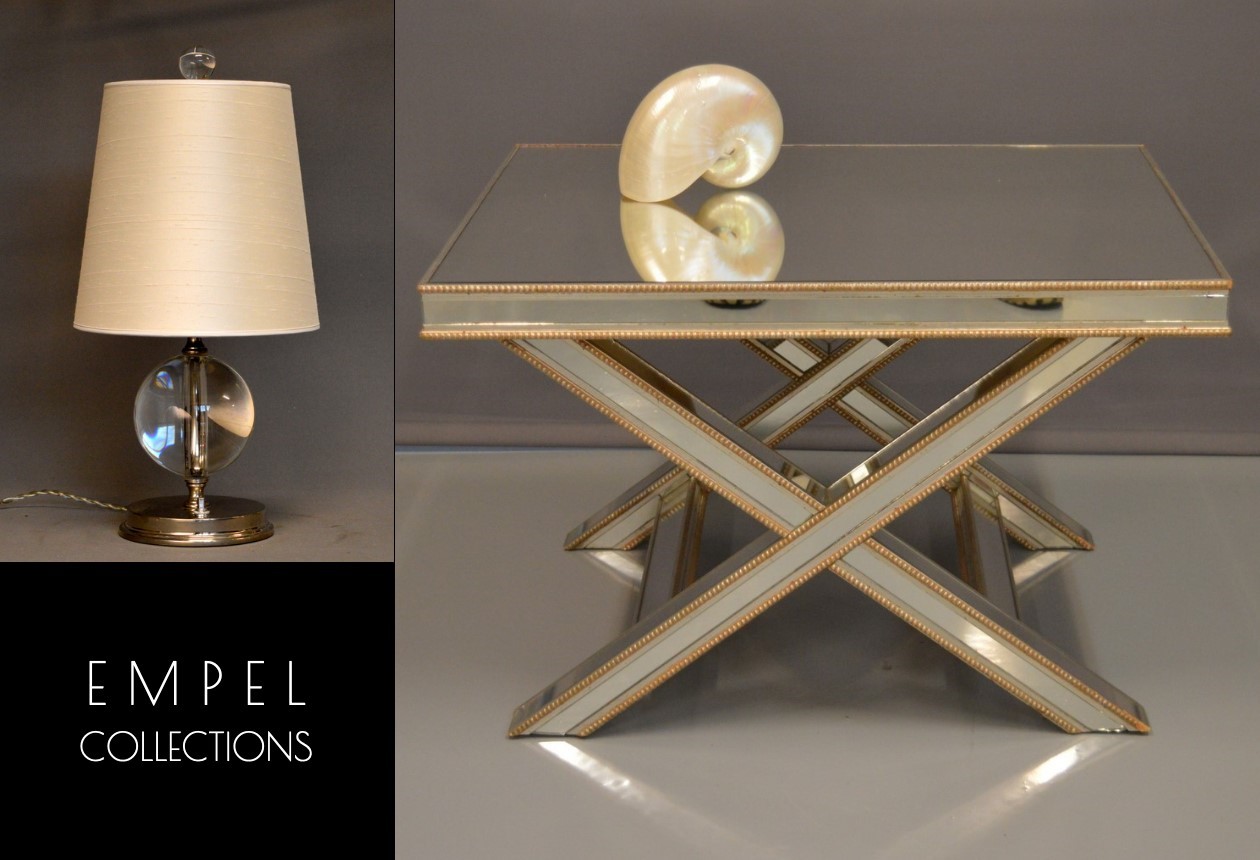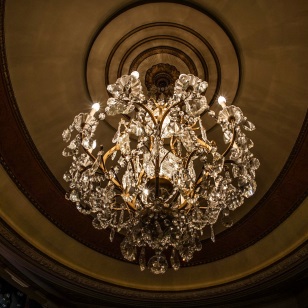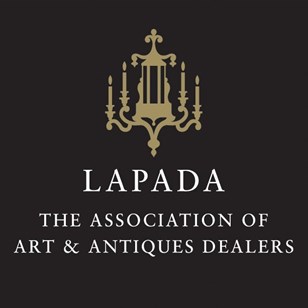C1925 Rare Pair Of Silver Plate Champagne Coolers - Kit Kat Club!
Stock No
12385
2020
- £2,500.00 the pair
- €2,851 Euro
- $3,345 US Dollar
Questions about this item?
Like this item?
Item Description
C1925 A Rare Pair of Silver Plate Champagne Coolers - from the legendary Kit Kat Club!
The Kit Cat Club
The fashionable Kit Cat Club in the Haymarket, which to many people today still epitomises the gay carefree days of the 1920s, was opened in the summer of 1925 and immediately became one of the most famous nocturnal haunts in London. Decked out with the last word in restaurant and dance floor equipment it was regarded as the most sumptuous resort in Europe and was the only club in London that had been built expressly for the purpose of a club.
The Kit Cat Club was situated in a central position right in the heart of the West End, in the basement of the Capitol Theatre with a main entrance on the Haymarket. The entire complex of the large and ornate theatre and the club itself was created as part of a development of an island site on this major London thoroughfare. The building was designed by Andrew Mather (architect of many later Odeon cinemas) with seating for 1,700 and was owned by Sir Walter Gibbons who leased the theatre to the Cleavering Brothers and the Kit Cat Club (part of a company that had interests in the Piccadilly Hotel). For the latter, Charles Ruthven was Chairman and Sir Walter Gibbons and the MP for East Newcastle (Sir Grattan-Doyle) on the board. Mr P. Sose (well known from Ciro’s) was the manager and Colonel Walter Elway Jones (the son of R.E. Jones of catering fame) was a particularly competent secretary. It was an ultra-chic members only club described as ‘luxurious, but wonderfully comfy… a vastly patronised and fashionable resort’ and such was its popularity that within a short space of time membership exceeded 6,000 including Princes, cabinet ministers, dukes and peers.
A glass fronted entrance, suggestive of a hotel, led into a large lobby with showcases and a cloakroom and then through to a lounge. Two floors below the street level was the ballroom, restaurant, grill room, American bar and writing room, accessed by a wide staircase that went down to the balcony and then down to the dance floor. There was also a lift. The balcony was the rendezvous for ‘professional people’ as here guests were allowed just to wear street dress. The ballroom itself was a large, high and spacious rectangle with dimensions of 80 x 60 feet that was twice as big as the ballroom at the Piccadilly hotel. There was a wide balcony all the way around and opposite the stairs was a recessed space for the orchestra – the admirable syncopation of Al Starita’s band. At the sides of the room were two parallel rows of supper tables. The décor was in ivory, gold and turquoise on Italian Renaissance lines. Tall royal blue and gold pillars rose right up to the roof and the balcony had painted heraldic shields on the balistrade and a floral edging. Interestingly, the colour scheme continually changed caused by kaleidoscopic shafts of light -purple, blue and orange projected onto the dance floor from above.
This large, comfortable and handsomely furnished club opened for drinks and dinner and at 10pm and midnight there was an entertainment of either singers, dancers, acrobats or jugglers. The place usually filled up from 11.30pm when the theatres emptied and attracted a wealthy cosmopolitan crowd. Everwhere was light, life and colour and swift movement, the rhythmic tapping of feet, the rustling of skirts, the throbbing of violins and the hum of laughter and talk. The Kit Cat made club history but it was no place for those with abbreviated bank accounts.
The headlining act for the grand opening were the famous Dolly Sisters who were at the time having fun in Paris. Since their new contract for the autumn season of 1925 at the Moulin Rouge specified that they could not appear prior to this in Paris, they accepted the offer to appear in the opening show. When they arrived in London at the beginning of July, the Dollies were guests at a special welcome luncheon given at the Georgian Room in the Piccadilly Hotel with an address from Sir Charles Ruthen (Chairman of the Kit Cat Club), Sir Grattan Doyle (MP and Sportsman) and C.B. Cochran, prior to the start of their performance on the 6th July 1925.
The opening show, which ran until the end of august 1925 also featured the American dancing duo of the deMarcos along with Ted Lewis and his band and Val and Ernie Stanton. At some point the dancing of the celebrated team of Sielle and Mills (who were performing at the Piccadilly Hotel) was also introduced. Thereafter, all acts who played the Piccadilly Hotel also had to work the Kit Cat Club, with the exception of the chorus. Both venues (Piccadilly Hotel and the Kit Cat Club) were particularly favoured by American visitors and members of the theatrical profession. Significantly, the vogue for high salaried American entertainment for English and Continental cabarets found its origins at the Kit Cat Club during the first year (1925-1926) and most of the acts were booked through the William Morris agency in New York via the team of Harry Foster and E.O. Leadlay in London.
Throughout 1926 a string of celebrated and legendary cabaret acts appeared: in January there was Gypsy Rhoumage, Hal Sherman, Barrie Oliver and Max Wall followed by Maurice and his partner Eleanor Ambrose; in February the American acts of Frances White, Lester Allen and Nellie Breen; in June Franklyn Graham and Barbara danced for a short season to Paul Whiteman’s Band; in July Gaston and Andree again; in August the stunning team of Fowler and Tamara; in September the Houston Sisters and the singing of Marion Harris and in October the dancing of Divina and Charles
However, disaster struck when, on 11th December, the Kit Cat Club was raided by the police and was de-registered for three months as a result of liqour been served after hours to non members. The Haymarket Pty Ltd, the proprietors of the club, were fined £500 each with £156 costs. Col Jones, director, was fined £350 and Peter Soso (or Sose?), manager £10. During the period of closure there was a battle amongst the directors about the future of the premise. Sir Walter Gibbons owner of the property was rumoured to be at loggerheads with the management team and wanted the premise to become a restaurant not a club. In the end he won and at sometime in mid May 1927 it was announced that the Kit Cat Club would re-open as a restaurant under a new syndicate headed by Harry Foster and Major Robin Humphreys.
Harry Foster, an agent and manager, had been responsible for producing the shows at the Piccadilly Hotel and the Kit Cat Club for over two years and in 1924 had also launched the Café de Paris in Coventry Street with George and Robin Humphreys, but had not been able to make it a success. Foster sold out to Humphreys and Martin Poulsen who did. The latter, swiftly expanded their activities and took over the Cavour as the Café Anglais. The wew syndicate with Harry Foster was called Hotels de Paris and effectively controlled three of the major nightspots in London – the Kit Cat Restaurant, the Café de Paris and the Café Anglais.
The new Kit Cat Restaurant opened on 10th October 1927 with a sparkling new show featuring the singer Aileen Stanley, the comic dancer Ben Blue, the comic musician Joe Termini and the dancing of Joan Pickering and Danny Fer. Before the end of the year the Dodge Twins, Holland and Barry and Quinault and Rowe also performed. Within a short time the magic spell of the venue began to work again and it was being described as a high-class dance restaurant with a smart little entertainment given every night after dinner and supper.
Highlights in 1928 included the adagio dancing of Myrio, Desha and Barte from New York (February), the Spanish dancers Carlos de Vega and Coralo Goya and the black dancer Johnny Hudgins (March) and Sophie Tucker (April). In early 1929 Sylvia and Kathleen Fayre gave a delightful skating dance and Barrie Oliver and the Charlot girls along with Marion and Martinez Randall formed one show. The new American dance band of Abe Lyman caused a huge stir as they attracted the regular interest of Prince George and the Prince of Wales. As before The Kit Cat was being called the HQ of Americans and continued to make much of American bands and acts and at the end of 1929 for example, the American ballroom dancing team of Chaney and Fox were featured.
In the early part of 1930 Flaneur of Theatre World made a visit and observed that the very name of the place held a promise of glamour and enchantment which was fulfilled with the cuisine and the famous cellars being ‘sans peur et sans reproche’. The cachet of the delectable place was ‘it possesses that indefinable but easily detectable trait, a friendly atmosphere’ with no haughty maitres d’hotel and sommeliers and from the head waiter to the boy who brings your cocktail everyone was intent on making you feel at home.
The music was provided alternatively by Hal Swain during dinner and by Jack Hylton at supper and the cabaret was by the trio of Howell, Haiger and Naldi, sensational whirlwind dancers from the stage show Here Comes the Bride.
In the spring of 1930 Teddy Brown and his orchestra appeared, followed in the summer by Ted Lewis and his musical clowns and in the autumn Johnny Hemp and the Kentucky Serenaders drew capacity crowds. One of the highlights in early 1931 was the dancing of the celebrated British ballroom dancers Moss and Fontana, after a five-year absence from London, with the help of Odette Myrtill as a sort of MOC and the comedy cartoonist Van Dock.
Despite the attractions and undoubted praise things were not good financially and in Match 1931 the place was forced to close. Colonel E.W. Jones took his activities to the Piccadilly Hotel where he became acting social manager and Mr Ernest Soso (the restaurant manager) took over the management of the Piccadilly restaurant.
Another consortium took over the venue and The Kit Cat restaurant once again re-opened on14th May 1931, first with Reg Batten and his band and then a band under direction of Percival Mackey. Later, in September, Alfred Rose and his Tzigane band performed. The restaurant continued thereafter through the 1930s but it is not known how long the restaurant survived. It is believed that the venue was destroyed in a bombing raid during the Second World War.
All text © copyright Gary Chapman / Jazz Age Club and must not be re-used without prior consent.
With thanks to Gary Chapman / Jazz Age Club
Sources:
The Stage Yearbook, the Stage, Variety, Straits Times, Theatre World, the Era, the Sketch, Looker-on, Dancing Times, The Referee, Eve Magazine, Chicago Tribune, The Argus Melbourne, the Encore & Popular Music Weekly.
Nights in London by Horace Wydham
The restaurants of London by Eileen Hooton-Smith
Some of These Days by Sophie Tucker
Item Info
Seller
Seller Location
London, London
Item Dimensions
H: 68cm W: 31cm D: 31cm
Period
C1925
Item Location
United Kingdom
Seller Location
London, London
Item Location
United Kingdom
Seller Contact No
+44 (0)207 7231555
+44 (0)7814 599315











